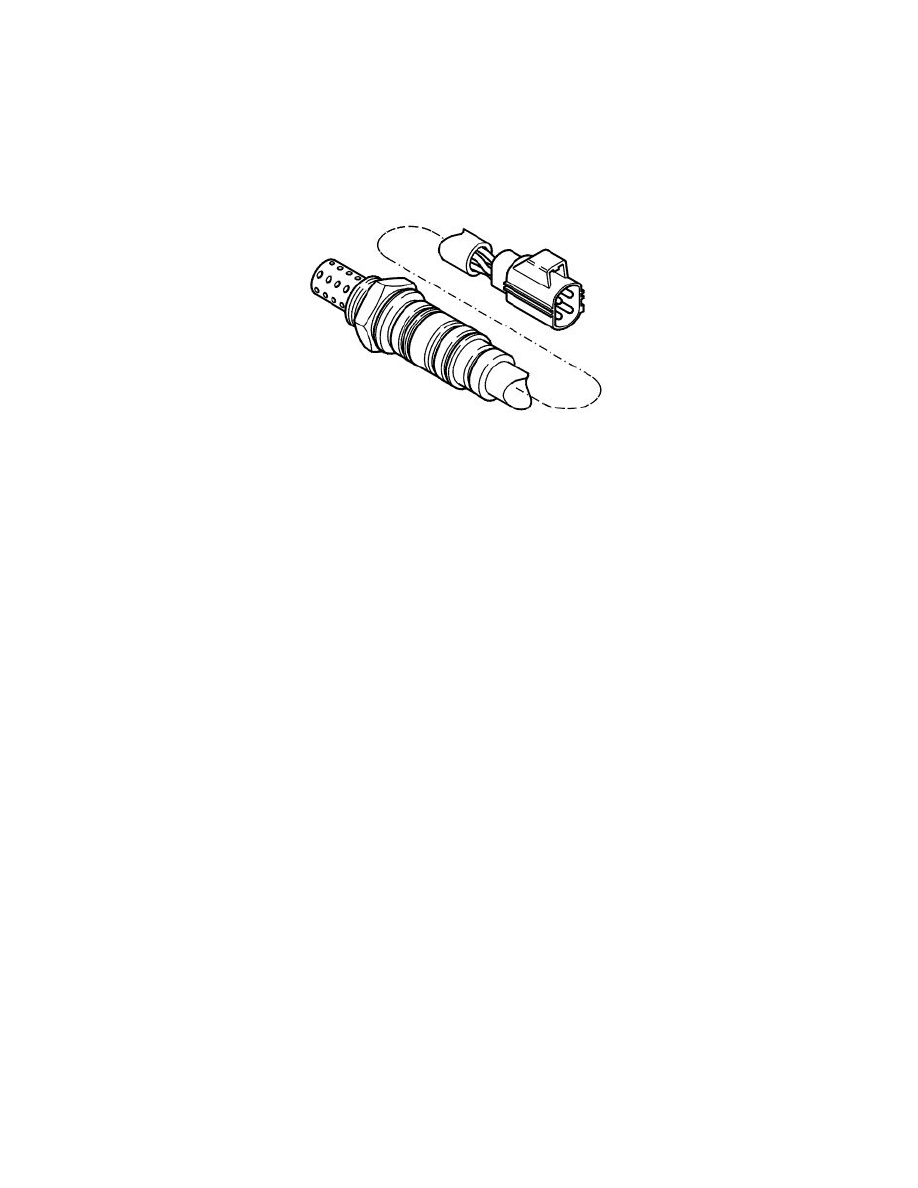S60 L5-2.4L VIN 64 B5244S6 (2003)

Caution! The wiring for the heated oxygen sensors (HO2S) must not be trapped or damaged in any way. The connectors for the heated oxygen
sensors (HO2S) must not be greased under any circumstances. The oil in the grease would disrupt the reference air and the function of the
heated oxygen sensors (HO2S).
The engine control module (ECM) can diagnose the heated oxygen sensor (HO2S).
VIDA can be used to read off the calculated lambda value from the heated oxygen sensor.
Rear heated oxygen sensor (HO2S)
The rear heated oxygen sensor (HO2S) is used to provide the Engine Control Module (ECM) with information about the remaining oxygen content of the
exhaust gases behind the three-way catalytic converter (TWC). This information is used by the Engine Control Module (ECM) to check the function of
the three-way catalytic converter (TWC). This check is carried out when the conditions for the catalytic converter diagnostics have been met. The rear
heated oxygen sensor (HO2S) has no direct effect on regulation of the fuel/air mixture. However the Engine Control Module (ECM) uses the signal to
optimize the signal from the front heated oxygen sensor (HO2S).
The heated oxygen sensor (HO2S) uses voltage control. The signal characteristic is binary. With a binary signal characteristic, the amplitude of the
signal curve changes considerably when changing the oxygen content in the exhaust gases. Otherwise its components and function are the same as the
front heated oxygen sensor (HO2S).
Caution! The air lines for the heated oxygen sensors (HO2S) must not be trapped or damaged in any way. The connectors for the heated
oxygen sensors (HO2S) must not be greased under any circumstances. The oil in the grease would disrupt the reference air and the function of
the heated oxygen sensors (HO2S).
The engine control module (ECM) can diagnose the rear heated oxygen sensor. The signal can be read using VIDA.
Preheating of the heated oxygen sensors (HO2S)
The heated oxygen sensor (HO2S) only functions above a certain temperature, approximately 300 °C. The normal operating temperature is between
300-900 °C. The heated oxygen sensors (HO2S) are electrically pre-heated so that operating temperature is rapidly reached. This also ensures that the
heated oxygen sensors (HO2S) maintain a normal operating temperature and to prevent condensation which could damage the heated oxygen sensor
(HO2S).
The heater element in the probe consists of a positive temperature coefficient (PTC) resistor. The system relay supplies the heater element with voltage.
The element is grounded in the engine control module (ECM). When the control module grounds the connection a current flows through the PTC
resistor. When the heated oxygen sensor (HO2S) is cold, the resistance in the PTC resistor is low and a large current will flow through the circuit. The
current from the Engine Control Module (ECM) is pulsed at first to prevent condensation damage to the heated oxygen sensor (HO2S). Depending on
the temperature, allowances are made for factors such as the dew point. As the temperature in the PTC resistor rises, the resistance rises, the current falls
and switches in stages to a constant current. The pre-heating time for the front heated oxygen sensor (HO2S) is short, approximately 20 seconds.
Probe preheating begins as soon as the engine is started. The heater element heats the heated oxygen sensors (HO2S) to approximately 350 °C. The
probes maintain this as a minimum temperature.
The engine control module (ECM) can diagnose the heater element.
Engine coolant temperature (ECT) sensor
